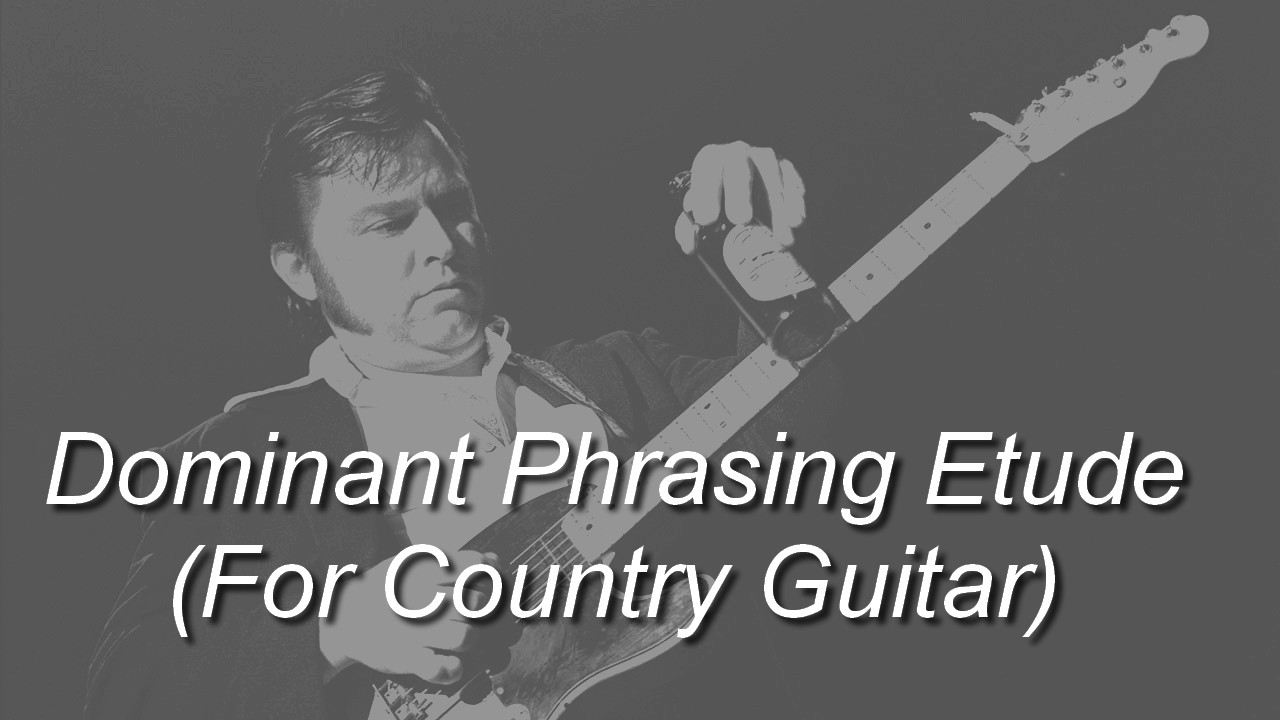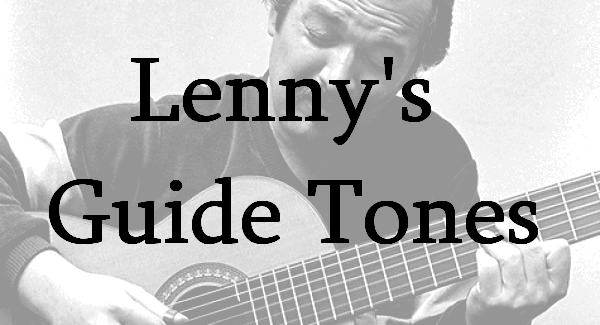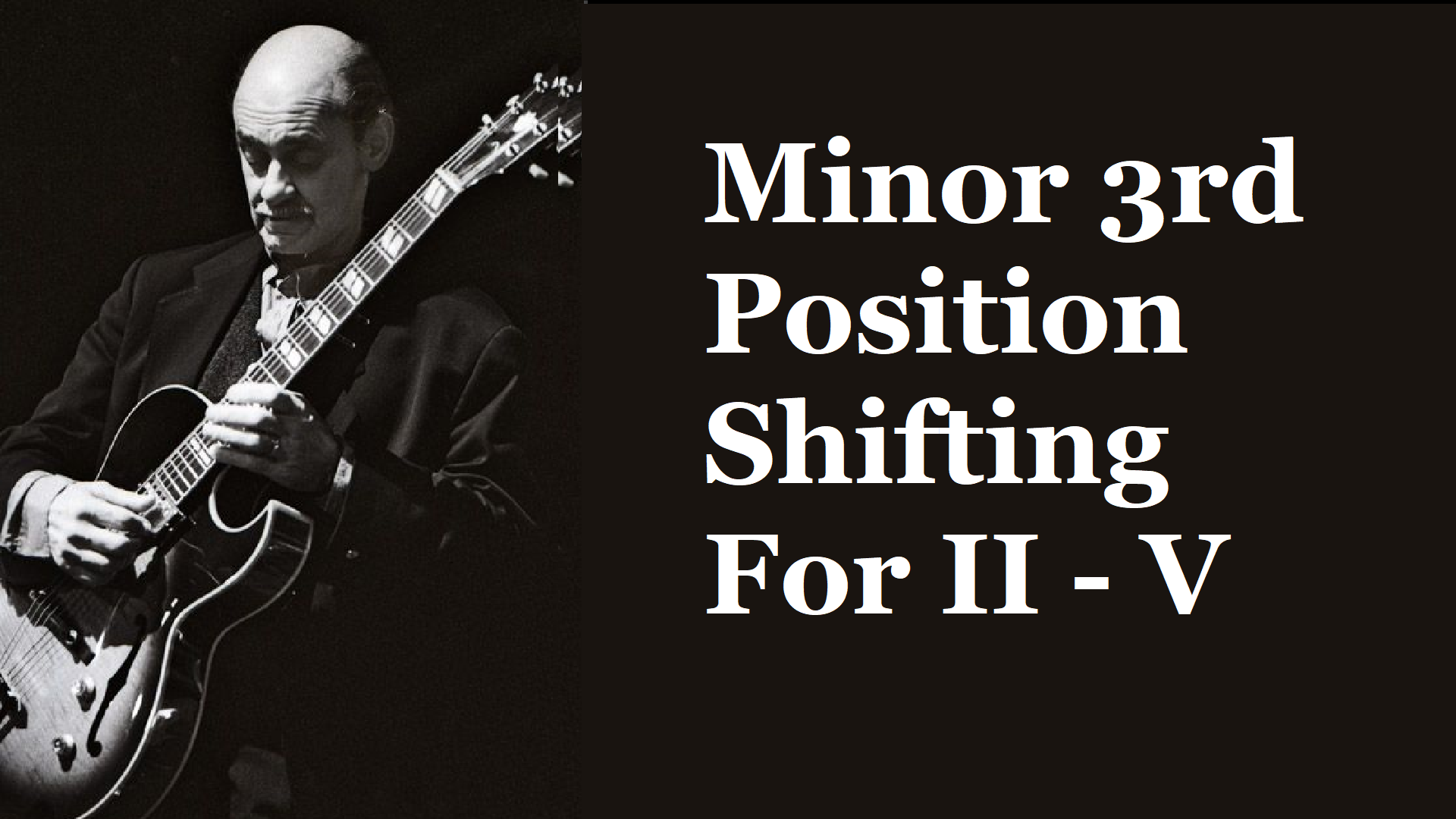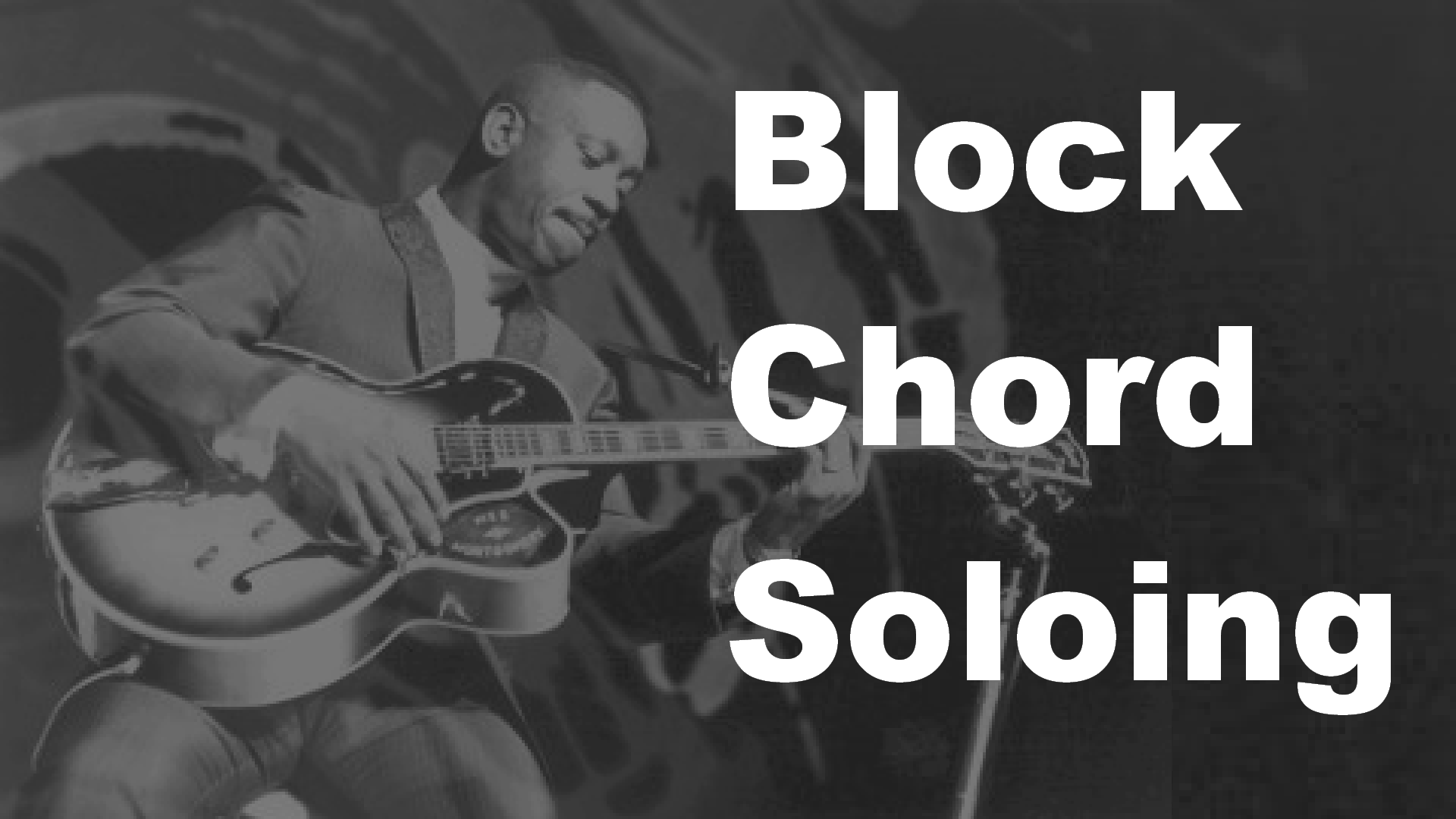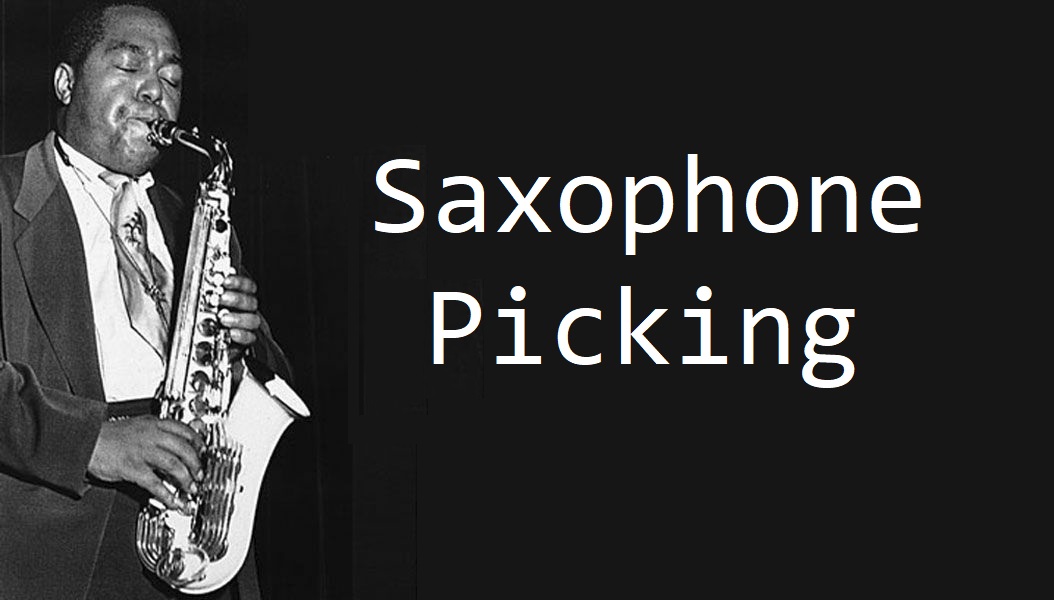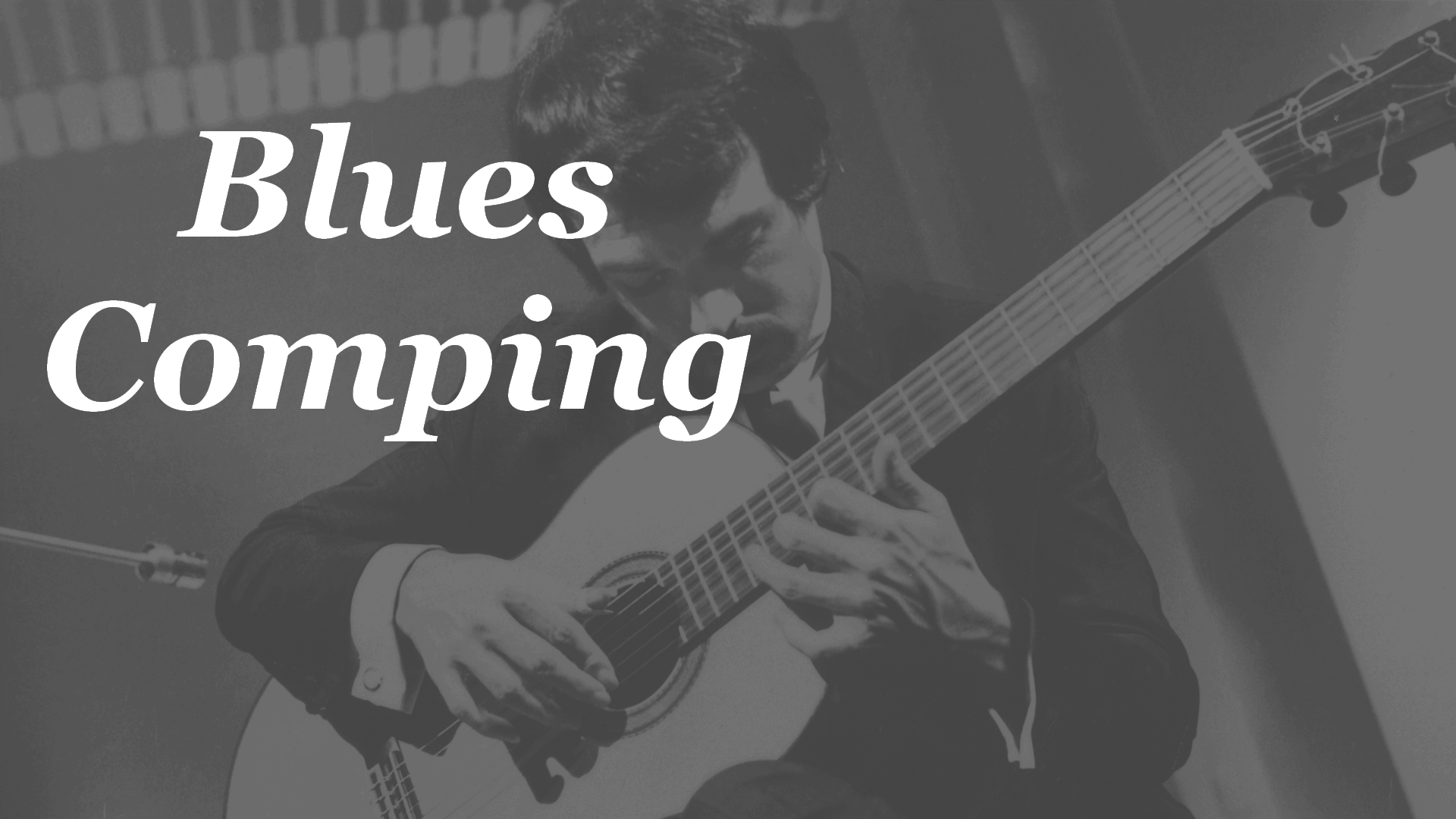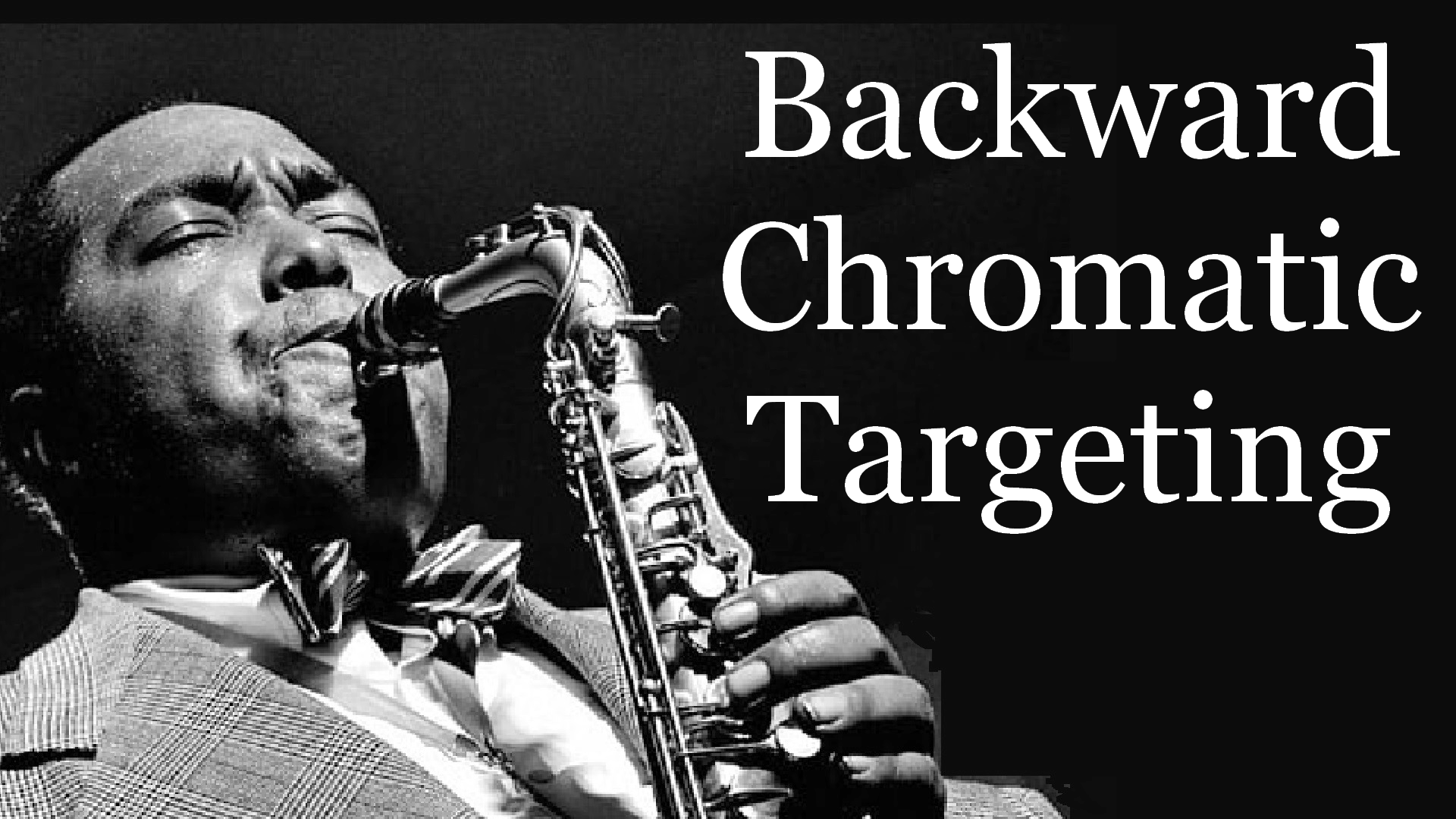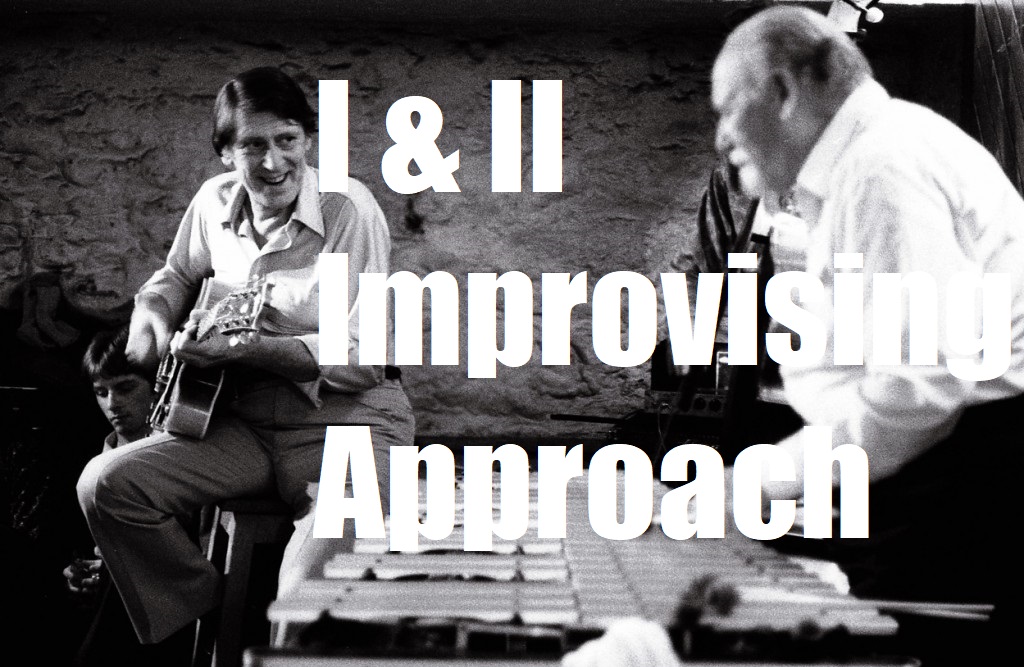
Intro
Learning Jazz improvisation is a colossal task especially for musicians with a non Jazz background. I see a lots of guitarists that are discouraged and don’t see the lights at the end of the tunnel. I can perfectly relate to how they feel. Coming from a non jazz background myself I had to completely re-think how I was approaching music. I have basically fell in every possible traps and have lost a lots of precious time. This method is meant to provide a solid starting point to develop improvisation on traditional jazz, hopefully it will prevent you from falling in the same traps than me.
Why I and II?
In this lesson I will share with you the core of my improvising method. The idea is that there are only 2 main functions in music; there is the ‘Root‘ function and there is the ‘dominant‘ function. Any given chord or chord section can be ‘reduce’ to one of these 2 functions. What we will do when improvising is think of ‘I’ for every Root chord or group of chords and think of ‘II’ for every Dominant chord or group of chords. I am specifying ‘chord or group of chords‘ because what we will want is to simplify those chord progressions to enable more freedom when improvising. This mean that when we will have a group of short duration chords, we will analyze the group as a whole and reduce them to one of these two function.
This Lesson will focus on major keys for now but everything here will be applied to minor keys in a further lesson. Also note that this approach only cover diatonic improvisation. Altered sound which I like to call ‘chromatic harmony’ will also be covered in a further lesson.
Disclaimer! This method is based on chord function and not strictly on chord/scale relation which I think can be a very harmful way to think for beginner jazz improvisers. Although, chord/scale approach is very suited for modern music using non-functional chord progressions, it is not so much suited for traditional jazz. There are various reason for that but the main one is that the chord/scale approach doesn’t take into account the Chords relation to key center.
Analyzing chord progressions
A simple way to analyze chord progressions according to function is simply to think of I III & VI as root chords and II – IV & V as dominant chords. Other chords will be considered embellishments. They usually are short duration chords and do not influence the function, we will ignore these chords when improvising.
Let start with the most common Jazz chord progression; I-VI-II-V. In this progression the I & VI will be treated as root chords and the II & V will be treated as dominant chords. We will think of Cmaj7 (I) for the first 2 bars and we will think of Dm7 (II) for the next 2 bars. Going from one I to II will create the movement needed to get the conversation effect that you want in a jazz solo.
Ex. 1

Simple enough? Now is where it’s starting to get interesting. Next progression include a bunch of diatonic variation on a I-VI-II-V. These variations do not affect the function of the progression which is 2 root bars and 2 dominant bars so lets play the exact same lines over this progression and listen to the result :
Ex. 2

Nice! See how the progression enhance the melody? Now there is a nice interaction between the comping and the solo. A common mistake beginner improvisers would do when improvising over this type of progression is trying to outline every chords. Although it is perfectly fine to outline every of these chords, especially on a very slow piece, this shouldn’t be your ‘go to’ approach. This would limit your possibilities and creativity. The goal is to create an improvising structure and let your ear do the rest. With enough practice, outlining these chords will come naturally by ear.
Let’s now examine another accompaniment variation over a I-VI-II-V. This time using more chromatic harmonies. Again, let’s ear the exact same line but with a bunch of secondary dominants and flat 5 subs.
Ex. 3

Sounds good? Now that we have done our little experiment over a I-VI-II-II progression, Let’s try to apply this to various song sections taken from standard jazz pieces.
From now on, I will only write the chord form I am thinking of when improvising. It will be either major or minor7 chords, major chords being for Root section and Minor7 chords for Dominant sections.
Smoke Gets into your eyes :
‘Smoke gets into your eyes’ is the perfect example of a progression I had a hard time improvising over in the past. I was trying to apply the chord/scale relation concept…. lol. All these changes are again, simple variations over a I-VI-II-V.
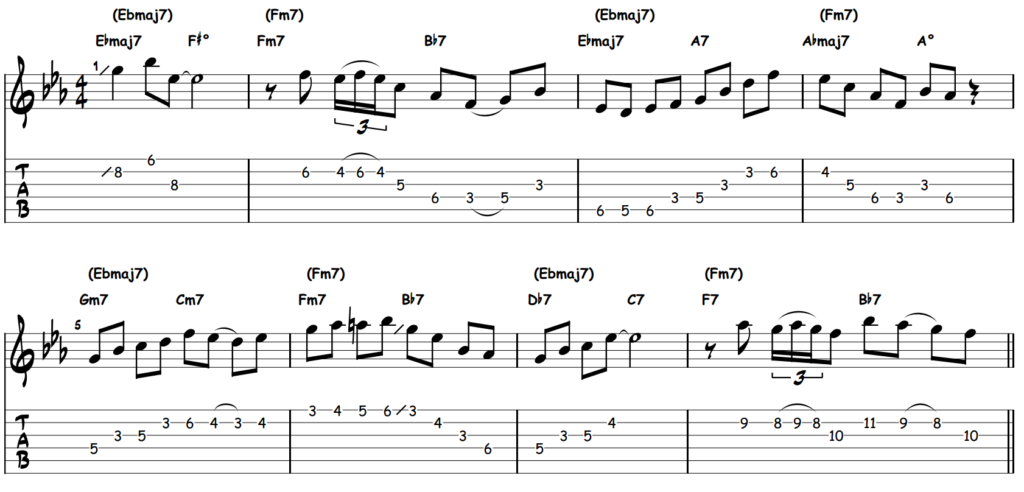
When Sunny Gets Blue :
In most jazz compositions some chords or chord passages will belong to other keys than the song home key. These sections need to be analyzed according to their own keys. In this particular example there are 2 passages where we are momentarily in the key of Ab; At bar 2 and at the second half of bar 5. We will think of Bbm7 for each passages which is the II of Ab. Note that the Bø, in bar 5 first half, is simply a b5 substitution for Fmaj7. This substitution appear frequently in Jazz Standard, you can treat it as a Root chord in the home key.
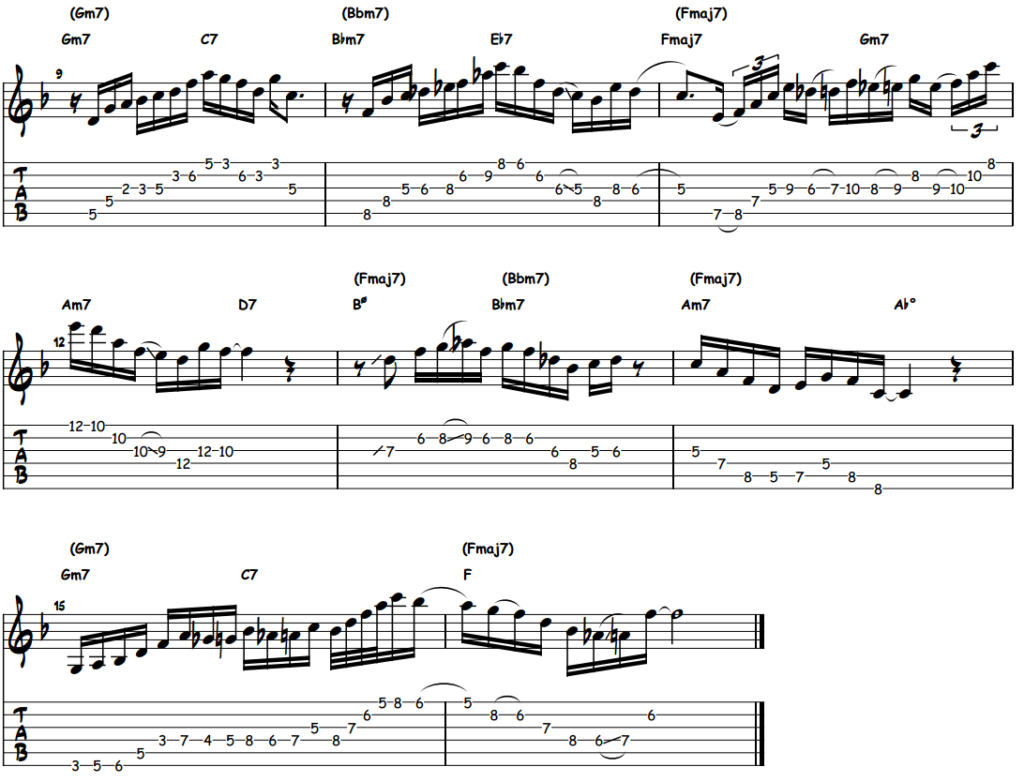
There Will Never Be Another You :
Here’s a complete form of a typical Jazz Standard. There are multiple sections that belong to other keys but if look closer you’ll notice that it is mainly V or II – V chords. You will not see complex chord sequences that are borrowed from other keys very often unless there is a complete modulation. Most of the time borrowed chords will only be II – V from another key.
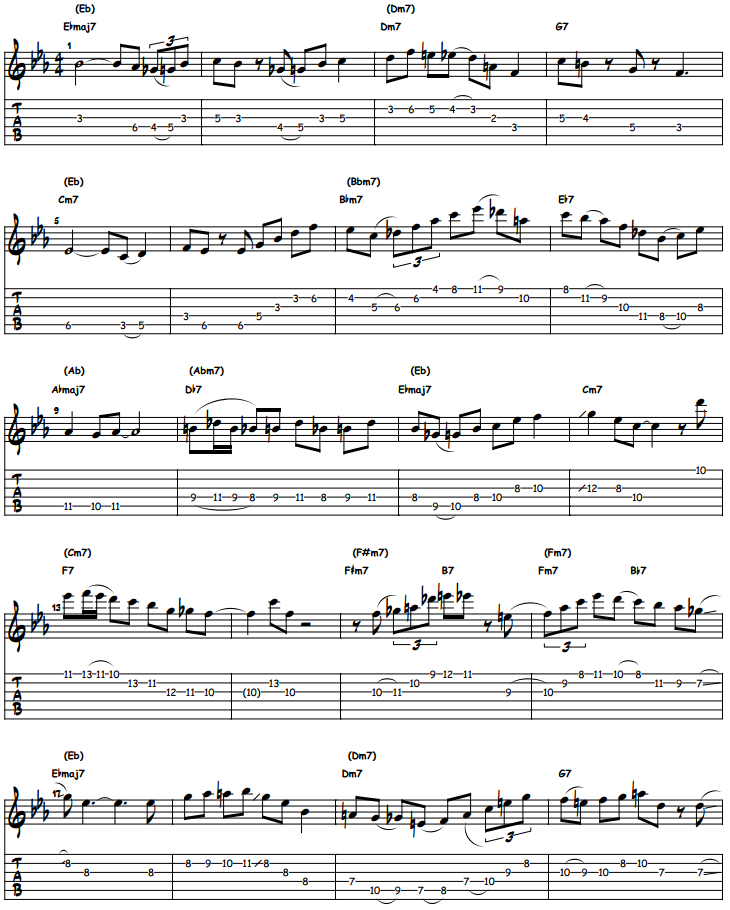
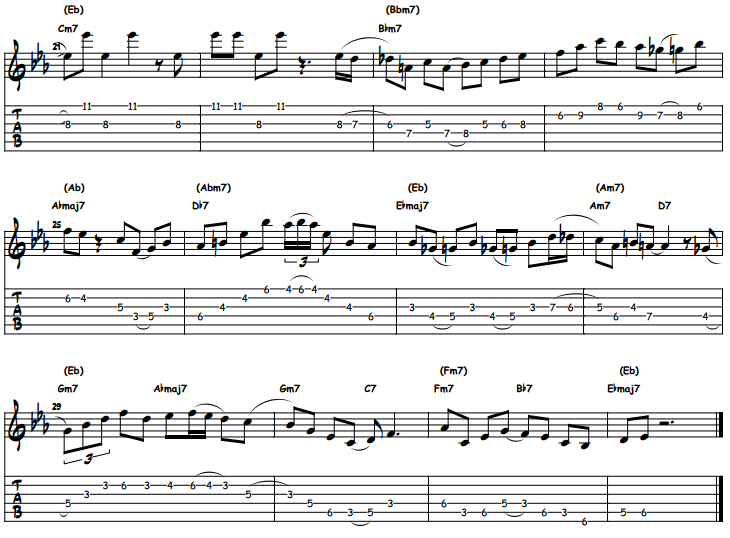
Again, note that this lesson only cover diatonic improvisation. I will add more lessons on altered dominants in the future, meanwhile you can take a look at my Minor 3rd shift for II – V lesson. Both concepts are pairing really well together.
A couple of quick notes :
- Root sections are very suited for melodic sequences.
- You can treat all dominant sections as II – V. Although, if the section doesn’t resolve on his root or a substitution of his root. It is preferable to avoid altered dominant lines or chords.
- Chromaticism and chromatic targeting can be added anywhere.
This will be a 2 part lesson, in the next part I will cover minor keys and i will take a look at different concepts that you can add on top of this approach. Cheers!
Support me on Patreon to access this lesson’s PDF file and help me keep the content coming!

